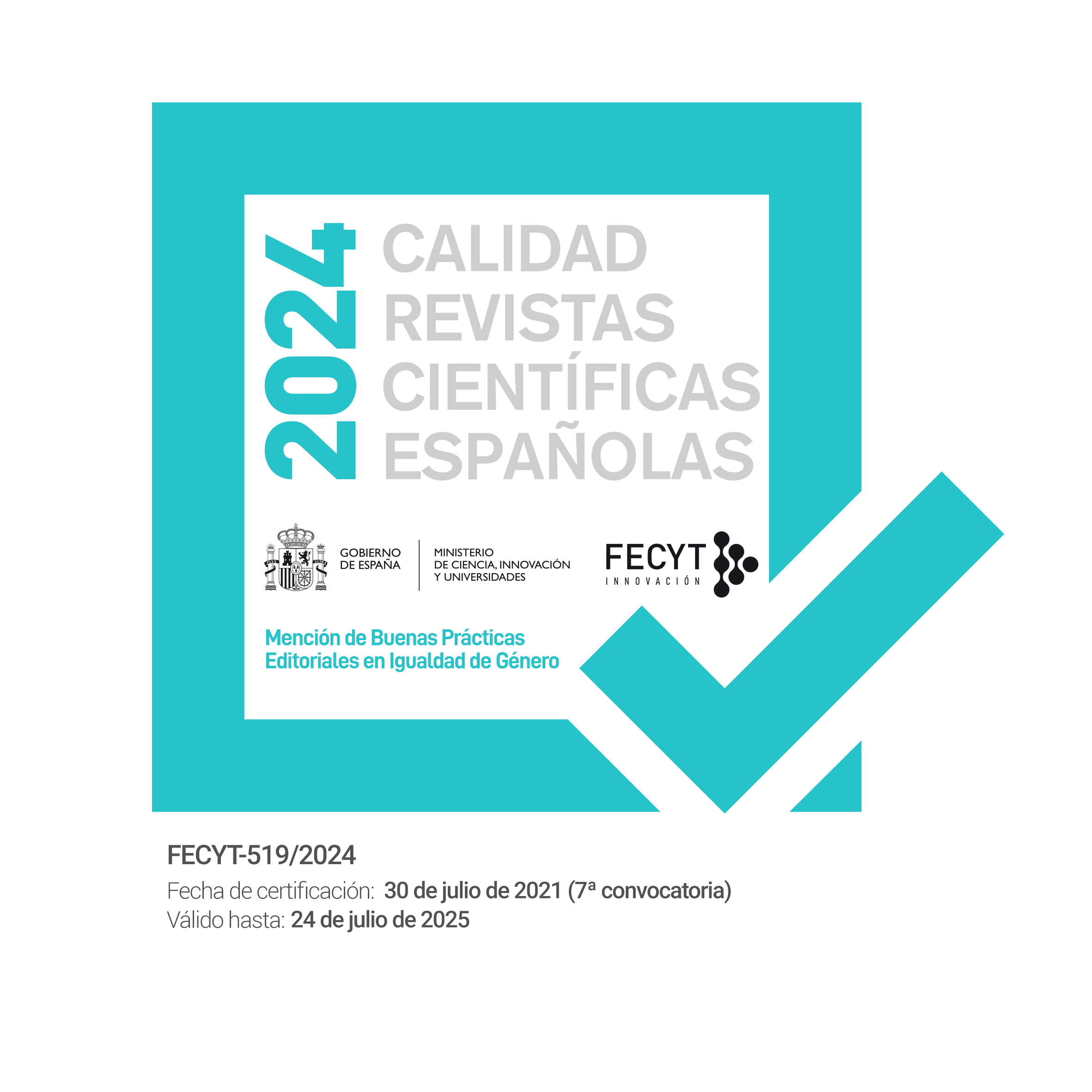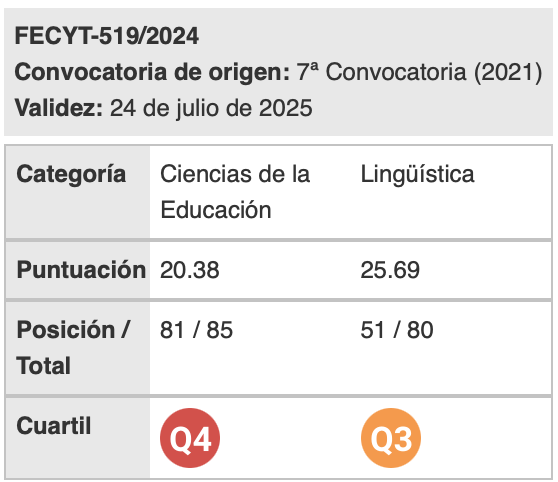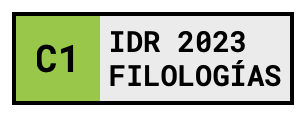PluriTAV research project. Quasi-experimental study of the application of a didactic sequence focused on the development of plurilingual and pluricultural competence
Keywords:
audiovisual translation, foreign language teaching, plurilingual and pluricultural competence, experimental study, English for specific purposesAbstract
The potential of audiovisual translation (AVT) in foreign language (FL) didactics has been demonstrated by several authors (Lertola, 2019) and projects, such as LeViS (Sokoli, 2006) or ClipFlair (Baños and Sokoli, 2015). However, their usefulness in the development of plurilingual and pluricultural competence (PPC) is still relatively unexplored (Baños et al., 2021). This competence –which is included in the Common European Framework of Reference for Languages (CEFR) and the Framework of Reference for Pluralistic Approaches to Languages and Cultures (FREPA)– advocates moving away from the exclusive use of FL and bets on plural approaches in the classroom. It is in this scenario that PluriTAV (Audiovisual translation as a tool for the development of plurilingual competences in the classroom, 2016-2019) emerged, a research project whose aim was to work on the multilingual approach through AVT in three areas: the improvement of competences in FLs and mother tongues, and the development of PPC.
This article presents the theoretical basis of PluriTAV, as well as the design and results of the empirical implementation of a didactic sequence (DS) focused on interlingual dubbing. This DS includes examples of activities that explore the impact of intra- and interlinguistic transfers on the development of PPC by university students of English for specific purposes with a B2 level of English. The article concludes with some reflections on the results of the design and implementation of the DS, on the possibilities of adapting it to other educational contexts and levels, and on the potential of AVT in the acquisition of PPC in higher education.
Downloads
References
Baños, R., Marzà, A. y Torralba, G. (2021). Promoting plurilingual and pluricultural competence in language learning through audiovisual translation. Translation and Translanguaging in Multilingual Contexts, 7(1), 65-85.
Baños, R. y Sokoli, S. (2015). Learning foreign languages with ClipFlair: Using captioning and revoicing activities to increase students’ motivation and engagement. En K. Borthwick, E. Corradini y A. Dickens (Eds.), 10 years of the LLAS elearning symposium: case studies in good practice (pp. 203-213). Dublín: Research-publishing.net.
Beacco, J. C., Byram, M., Cavalli, M., Coste, D., Cuenat, M. E., Goullier, F., y Panthier, J. (2016). Guide for the development and implementation of curricula for plurilingual and intercultural education. Estrasburgo: Consejo de Europa.
Borghetti, C. y Lertola, J. (2014). Interlingual subtitling for intercultural language education: a case study. Language and Intercultural Communication, 14(4), 423-440.
Bronckart, J.P. (1999). L’enseignement des langues; pour une construction des capacités textuelles. En M. García, R. Giner, P. Ribera y C. Rodríguez (Eds.), Ensenyament de Llengües i Plurilingüisme (pp. 17-26). Valencia: Universitat de València.
Calduch, C. y Talaván, N. (2017). Traducción audiovisual y aprendizaje del español como L2: el uso de la audiodescripción. Journal of Spanish Language Teaching, 4(2), 168-180.
Candelier, M., Camilleri-Grima, A., Castellotti, V., de Pietro, J.-F., Lörincz, I., Meissner, F.-J., Noguerol, A., y Schröder-Sura, A. (2013). Marco de Referencia para los Enfoques Plurales de las Lenguas y de las Culturas. Competencias y recursos. Graz: European Centre for Modern Languages.
Cenoz, J. y Gorter, D. (2014). Focus on Multilingualism as an Approach in Educational Contexts. En A. Blackledge y A. Creese (Eds.), Heteroglossia as Practice and Pedagogy (pp. 239-254). Dordrecht: Springer.
Chaume, F. (2012). Audiovisual Translation: Dubbing. Mánchester: St. Jerome.
Consejo de Europa. (2002). Marco común europeo de referencia para las lenguas: aprendizaje, enseñanza y evaluación (Trad. Instituto Cervantes). Madrid: Instituto Cervantes. (Original de 2001).
Consejo de Europa. (2018). Common European Framework of Reference for Languages: Learning, Teaching, Assessment. Companion Volume with New Descriptors. Estrasburgo: Consejo de Europa.
Coste, D., Moore, D. y Zarate, G. ([1997] 2009). Compétence plurilingue et pluriculturelle, Vers un Cadre Européen Commun de référence pour l’enseignement et l’apprentissage des langues vivantes. Estrasburgo: Consejo de Europa.
Cummins, J. (1979). Linguistic Interdependence and the Educational Development of Bilingual Children. Review of Educational Research, 49(2): 222-251.
Dolz, J., Noverraz, M. y Schneuwly, B. (2001). Séquences didactiques pour l’oral et pour l’écrit. Bruselas: Éditions de Boeck.
Ibáñez Moreno, A. y Vermeulen, A. (2013). Audio description as a tool to improve lexical and phraseological competence in foreign language learning. En D. Tsagari y G. Floros (Eds.), Translation in language teaching and assessment (pp. 45-61). Newcastle upon Tyne: Cambridge Scholars Publishing.
Ibáñez, A., Jordano de la Torre, M. y Vermeulen, A. (2016). Visp Design and Evaluation, a Mobile Application To Practise Oral Competence. RIED. Revista Iberoamericana de Educación a Distancia, 19(1), 63-81.
Incalcaterra, L. y Lertola, J. (2011). Subtitling Activities for Foreign Language Learning: What Learners and Teachers Think. En L. Incalcaterra, M. Biscio y M. A. Ní Mhainnín (Coords.), Audiovisual Translation Subtitles and Subtitling (pp. 243-263). Oxford: Peter Lang.
Jakobson, R. (1959). On Linguistic Aspects of Translation. En A. Reuben (Ed.), On Translation (pp. 232–239). Cambridge, MA: Harvard University Press.
Kress, G. y Van Leeuwen, T. (2001). Multimodal discourse: The modes and media of contemporary communication. Londres: Arnold Publishers
Larsen-Freeman, D. y Anderson, M. (2011). Techniques and Principles in Language Teaching (3a ed.). Oxford: Oxford University Press.
Lenz, P., y Berthele, R. (2010). Assessment in plurilingual and intercultural education. Ginebra: Consejo de Europa.
Lertola, J. (2012). The effect of the subtitling task on vocabulary learning. En A. Pym y D. Orrego-Carmona (Eds.), Translation Research Projects 4 (pp. 61-70). Tarragona: Universitat Rovira i Virgili.
Lertola, J. (2019). Audiovisual Translation in the Foreign Language Classroom: Applications in the Teaching of English and Other Foreign Languages. Research-publishing.net.
Lertola, J. y Mariotti, C. (2017). Reverse Dubbing and Subtitling: Raising Pragmatic Awareness in Italian English as a Second Language (ESL) Learners. JoSTrans: The Journal of Specialised Translation, 28, 214-216.
Marzà, A., Torralba, G. y Baños, R. (2021). Assessing Plurilingual Competence: the Challenge of Designing Suitable Tests and Rubrics. En J. J. Martínez Sierra (Ed.) Multilingualism, Translation and Language Teaching: The PluriTAV Project (pp. 113-165). Valencia: Tirant lo Blanch.
Marzà, A., Torralba, G., Cerezo, B., y Martínez Sierra, J. J. (2018). PluriTAV: desarrollo de las competencias plurilingües mediante el uso de la traducción audiovisual. En V. Vega Carrero y E. Vendrell Vidal (Eds.), IN-RED 2018: IV Congreso Nacional de Innovación Educativa y Docencia en Red (pp. 111-125). Valencia: Universitat Politècnica de València.
Martínez Sierra, J.J. (Ed.). (2020). Multilingualism, Translation and Language Teaching. The PluriTAV Project. Valencia: Tirant Humanidades.
Muccino, G. (Director). (2006). The Pursuit of Happyness [Película]. Columbia Pictures.
Muñoz-Miquel, A. y Soler Pardo, B. (2021). Language Learning and Audiovisual Translation: Designing and using Language Tests. En J. J. Martínez Sierra (Ed.) Multilingualism, Translation and Language Teaching: The PluriTAV Project (pp. 77-112). Valencia: Tirant lo Blanch.
Navarrete, M. (2018). The use of audio description in foreign language education. A preliminary approach. Translation and Translanguaging in Multilingual Contexts. Audiovisual translation in applied linguistics: Educational perspectives, 4(1), 129-149.
Richards, J. C. y Rodgers, T. S. (2003). Enfoques y métodos en la enseñanza de idiomas (2ª ed.). (Trad. J. M. Castrillo). Madrid: Edinumen. (Original de 2001).
Sánchez-Requena, A. (2016). Audiovisual translation in teaching foreign languages: Contributions of dubbing to develop fluency and pronunciation in spontaneous conversations. Porta Linguarum, 6, 9-21.
Sánchez-Requena, A. (2018). Intralingual dubbing as a tool for developing speaking skills. Translation and Translanguaging in Multilingual Contexts. Audiovisual translation in applied linguistics: Educational perspectives, 4(1), 101-128.
Sokoli, S. (2006). Learning via subtitling (LvS). A tool for the creation of foreign language learning activities based on film subtitling. En M. Carroll, H. Gerzymisch-Arbogast y S. Nauert (Eds.), MuTra 2006-Audiovisual Translation Scenarios: Conference Proceedings (pp. 1-8). Copenhague: MuTra.
Sokoli, S. (2015). Clipflair: Foreign language learning through interactive revoicing and captioning of clips. En Y. Gambier, A. Caimi y C. Mariotti (Eds.), Subtitles and Language Learning: Principles, Strategies and Practical Experiences (pp. 127-148). Berna: Peter Lang.
Stathopoulou, M. (2015). Cross-language mediation in foreign language teaching and testing. Bristol: Multilingual Matters.
Talaván, N. (2013). La subtitulación en el aprendizaje de lenguas extranjeras. Barcelona: Octaedro.
Talaván, N. (2019). Using subtitles for the deaf and hard of hearing as an innovative pedagogical tool in the language class. International Journal of English Studies, 18(2), 161-186.
Talaván, N. y Ávila-Cabrera, J.J. (2015). First Insights into the combination of dubbing and subtitling as L2 didactic tools. En A. Caimi y C. Mariotti (Eds.), Subtitles and Language Learning (pp. 149-172). Oxford: Peter Lang.
Talaván, N. y Costal, T. (2017). iDub-The potential of intralingual dubbing in foreign language learning: How to assess the task. Language Value, 9(1), 62-88.
Downloads
Published
How to Cite
Issue
Section
License
Authors who publish with this journal agree to the following terms:
- Authors retain copyright and grant the journal right of first publication with the work simultaneously licensed under a Creative Commons Attribution License that allows others to share the work with an acknowledgement of the work's authorship and initial publication in this journal.
- Authors are able to enter into separate, additional contractual arrangements for the non-exclusive distribution of the journal's published version of the work (e.g., post it to an institutional repository or publish it in a book), with an acknowledgement of its initial publication in this journal.
- Authors are permitted and encouraged to post their work online (e.g., in institutional repositories or on their website) prior to and during the submission process, as it can lead to productive exchanges, as well as earlier and greater citation of published work (See The Effect of Open Access).

Revista de Lenguas para fines específicos is licensed under a Creative Commons Reconocimiento-NoComercial-SinObraDerivada 4.0 Internacional License.

























